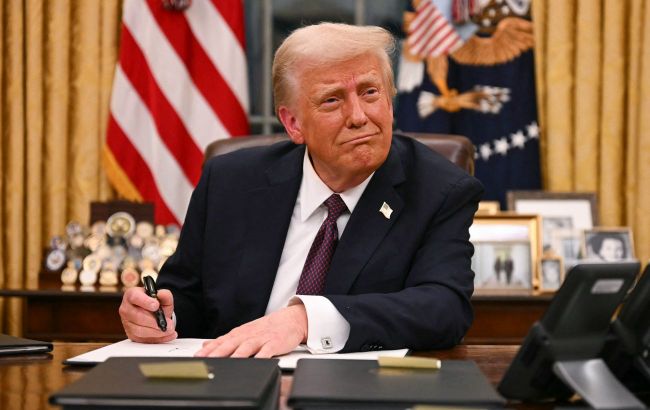Trump ends sanctions on Syria
 Donald Trump (photo: Getty Images)
Donald Trump (photo: Getty Images)
US President Donald Trump has signed an executive order lifting sanctions on Syria that had been in place since 2004, according to the official White House website.
“Today, President Donald J. Trump signed a historic Executive Order terminating the Syria sanctions program to support the country’s path to stability and peace,” the statement reads.
At the same time, it clarifies that sanctions will remain in place against Bashar al-Assad, his associates, human rights violators, drug traffickers, individuals involved in chemical weapons development, members of ISIS or its affiliates, as well as Iranian proxies.
The order also outlines several key directives:
- It instructs the Secretary of State to assess the possibility of suspending sanctions, either fully or partially, if certain criteria are met, under the Caesar Act, which imposes sanctions on the Assad regime for atrocities.
- It allows for the easing of export controls on certain goods and lifts restrictions on specific forms of foreign aid to Syria.
- It directs the Secretary of State to review the designation of Hay'at Tahrir al-Sham (HTS) as a foreign terrorist organization.
- It calls for a reassessment of the inclusion of HTS and Ahmad al-Sharaa on the list of Specially Designated Global Terrorists.
- It mandates a review of Syria’s designation as a state sponsor of terrorism.
- It also requires an examination of potential sanction relief at the United Nations level to help promote stability in Syria.
According to the White House website, President Trump intends to support a Syria that is stable, unified, and at peace with itself and its neighbors.
Updated as of 1:30 a.m.
President Trump’s executive order does not specify exactly when the sanctions repeal will take effect. However, it appears that the main restrictions will be lifted starting today, July 1, 2025.
At the same time, according to another White House publication, not all sanctions will be lifted immediately - some require additional time.
For example, the CWC Act (Chemical Weapons Convention Act) stipulates that sanctions can only be officially lifted 20 days after notifying the US Congress.
“The Secretary of State shall transmit this waiver determination and report as required by sections 307(d)(1)(B) and (d)(2) of the CBW Act to the appropriate congressional committees. This waiver shall be effective 20 days after it has been so transmitted,” the statement says.
Meanwhile, the decision to suspend the Caesar Act (secondary sanctions for aiding the Assad regime) can be made by the Secretary of State in coordination with the Treasury Secretary. In this case, sanctions can be suspended immediately, but the Secretary of State is then required to provide Congress with a briefing within 30 days explaining the decision.
When and why the US imposed sanctions on Syria
In May 2004, President George W. Bush signed an executive order that initiated the US sanctions regime against Syria.
The move was prompted by Syria’s support for terrorist organizations such as Hezbollah and Hamas, its interference in Lebanon’s internal affairs, and suspicions that it was developing weapons of mass destruction.
From 2006 to 2010, the sanctions were expanded in response to ongoing human rights violations.
In 2011, amid the outbreak of the Syrian civil war and brutal crackdowns by the Assad regime, President Barack Obama signed an executive order that effectively froze nearly all economic activity with Syria. It banned investments, exports, and financial transactions with the country.
Later, in 2019 and 2020, during his first term, President Donald Trump introduced secondary sanctions. These targeted foreign companies are doing business with Assad, Iran, or Russia, particularly if they were seen as aiding the Syrian regime.
The primary focus of those measures was on sectors such as construction, energy, military supplies, aviation, and other key industries.
Fall of the Assad regime
On December 8, 2024, a coalition of rebel factions launched an offensive and soon captured the Syrian capital, Damascus, declaring the fall of the Assad regime. At the same time, reports emerged that Bashar al-Assad and his family had fled Syria, heading to Russia, where they were granted political asylum.
Shortly thereafter, a transitional government was formed in the country, and on January 29, 2025, Ahmad al-Sharaa was sworn in as the new president of Syria.
For more on the reasons behind the collapse of the Assad regime, read the full article by RBC-Ukraine.

